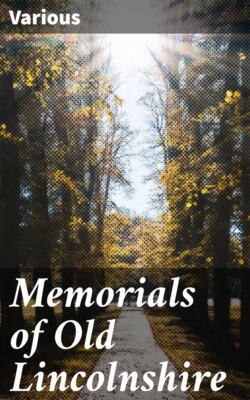Читать книгу Memorials of Old Lincolnshire - Various - Страница 19
На сайте Литреса книга снята с продажи.
To what Period in the Stone Age must we attribute the Pygmy Race of Mankind?
ОглавлениеTable of Contents
Here we have a problem that puzzles many at the present time. Mr. Read, of the British Museum, suggests a Neolithic Age or Bronze Period, while Mr. Vincent Smith does not agree with that, but inclines to the belief that they are to be placed at the end of the Paleolithic Age. Dr. Colley March calls it the Early Neolithic Floor of East Lancashire.
One thing is certain, we do not find any smooth or polished stone implements on the Pygmy Floor. Another thing is equally true, we do not find Pygmy Flints associated with Bronze or Copper implements, so that they were not metal workers.
The suggestion has been thrown out that the Pygmies were a weak race who were overcome by Neolithic Man. This may be true, but we have the authority of Herodotus, 2000 years ago, and modern travellers like Dr. Wollaston of 1907, pointing out that the Pygmies were, and are at the present time, rather a fighting race of people. After considering all the evidence obtainable, I am inclined to think that the Pygmy Race must be placed in the Messeolithic or Middle Stone Age.
It is true that at one period “there were giants on the earth in those days,” so also it is true that there were dwarfs on the earth in other days. Was this race the Iberic race?
It is ably argued by Mr. W. J. Knowles, Vice-President of the Royal Society of Antiquaries of Ireland, that Neolithic Man is the descendant of Paleolithic Man.
The question before ethnologists to-day is: How was this transition effected? Was it through a Messeolithic Age?
Because there are no references to the Pygmy Flint Age in the standard books of thirty years ago on Prehistoric Man, such as those of Boyd Dawkins, Canon Greenwell, Sir John Evans and Mr. Mortimer of Driffield, some few people are prepared to question the reality of what are called Pygmy Flints.
To begin with, each of these authors referred to have within the last few years become thorough believers in Pygmy Flints as the product of mankind. This is shown by their speeches at the recent meetings of the British Association at York and elsewhere.
Then let the doubtful person concerning Pygmy Flints turn to recent works on Prehistoric Man, such as Mr. Charles H. Read’s Handbook or Guide to the Stone Age, in the British Museum, published 1902, to Prof. Windle’s book on Remains of Prehistoric Age in England, published 1904, to the articles by Vincent A. Smith, late of India Civil Service, to Dr. Gatty, and other works, he will then, I think, if open to conviction, be ready to admit there is more evidence for a Pygmy race than he anticipated.
